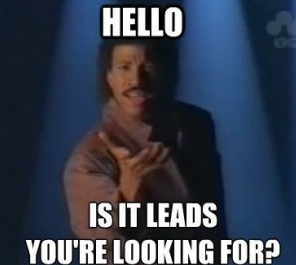
Solve the “Traveling Salesman Problem” and Improve the Effectiveness of Your Sales Force
By Admin User
Posted in Sales Tips, Sales Process, Sales Management

By Admin User
Posted in Sales Tips, Sales Process, Sales Management

Most outside salespeople wake up in the morning with only a rough idea of how to make best use of their day. They have several customers they would like to visit, and perhaps some others along the way they do not know about, but may not have a good schedule planned out. This shortcoming ending up in either backtracking or simply running out of time. The fundamental lack of sales route planning leads to missed customer visits and lost opportunities.
This problem has long been studied by mathematicians who know it as the “traveling salesman” problem. The problem calls for determining the shortest travel distance for an individual, given multiple points that they have to travel to, with varying distances between those points. While computers can certainly solve this sales route planning problem today, it still plagues salespeople every day from a practical standpoint because they do not have a computer next to them to solve it.
But now they do. Because reps now carry tablets and smartphones, they can use the computers in these devices to help them decide what to do and where to go next. Additionally, team members can now work together through these devices to help solve each other’s scheduling problems. In this way, a sales mapping app can make sales teams more efficient and allow them to spend more time in front of customers.
For a sales team to get the most out of a sales mapping app, the app should, at the minimum, have the following:
- Drill down to which customers are “important.” Most reps have hundreds or even thousands of customers in their territory, and they have to boil that number down to something that is manageable. Each sales team defines an important customer differently. It could be sales volume, market share, customer type, days since last visit, or any combination of the above or of other attributes. The app should allow the user to easily drill down to specific customers based on however the user defines an “important customer. ” This feature helps optimize territory mapping and management.
- Plan a schedule for the day. Some desktop mapping applications allow the user to plan a sales route. However a route is only the first piece of the equation. What really matters is the time schedule that the route implies. If a sales rep looking to spend an 8 hour day visiting customers, he or she want to create a route to those customers and then know whether that fills up his or her 8 hour day. That helps answering questions like: “Do I have slack time where they can drop in on someone along the way? Does one meeting not leave me enough time to make it to the next meeting?”
- Collaboration. While the above two attributes create a useful app for the individual, most salespeople operate in some sort of team. They at a minimum interact with a manager and may also interact with other outside or inside sales people who support them. Having an app where colleagues can view and adjust each other’s schedules, such as where an inside salesperson can set up appointments and make a route for an outside salesperson, may be valuable for many sales teams.
A sales mapping app can increase the efficiency of a sales team by 20% or more, based on feedback from users. And it can dramatically decrease the time to productivity for new sales reps or reps that have just changed territories.
And because of the cloud, the cost of this technology is low, typically less than $1 per day per user. Even a slight increase in sales production justifies that sort of investment.
Aaron Tolson
Co-Founder | Badger Maps
The Best App for Field Sales People
Learn how you can maximize your sales routes & sell more with Badger Maps
Related
Looking for our logo?
Grab a Zip packed with our logo in PNG and EPS formats.
Get Started now with a free trial of Badger Maps, no credit card required!
free trial